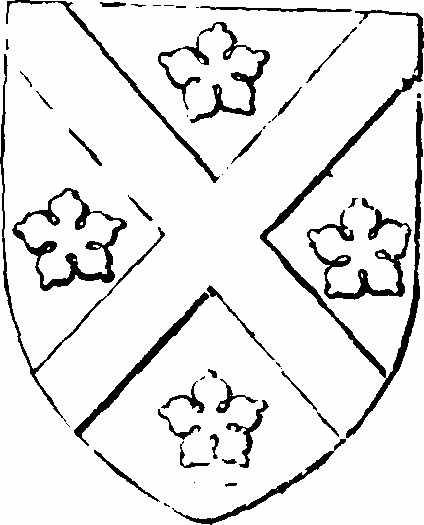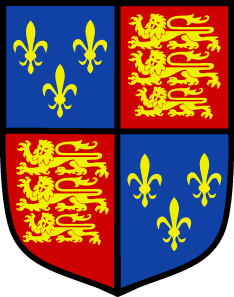THE ROYAL or NOBLE WELSH HOUSES
KEMEYS DEHEUBARTH DAFYD ABERFFREW

FOR MORE IN DEPTH INFO VIEW ON A PC
SCOTTISH ROYAL/NOBLE HOUSES
DUNKELD
MATERNAL BLOODLINE
SHAW CAMPBELL OF IRLEAND
THE FRENCH ROYAL or NOBLE HOUSES
BEAUMONT CAPETIAN BURGUNDY ROBERTIAN NORMANDIE

GERMAN ROYAL HOUSES
OTTONAIN
KINGS
OF
JERUSALEM
HOLY ROMAN EMPIRE CHARLEMANGE
ANGLO-NORMAN & ENGLISH ROYAL/NOBLE HOUSES
WESSEX PLANTAGENET LONGESPEE BEAUCHAMP TOSNEY FITZHAMON
FITZROY LUCAS FOSBROKE FARMER

The Shields above represent the Houses and Royalty the website owner is descended from.
Click on above Shields for more info
Disclaimer:
* Luanne Ruth Farmer uses the German title Pfalzgräfin von Burgund, meaning in English Countess Palatine of Burgundy.'
This is meaning the said person has acquired the use of th title by purchase of an ancient European title that was ceded or annexed by another county or country
and that has had no apparent heirs since, therefore is extinct. She therefore distinguishing herself by the added name or stage name of Pfalzgräfin von Burgund or ' Countess Palatine of Burgundy.'
She purchased the use of in the year of Our Lord 2016.
In this website the title holder maybe referred to as 'The Countess Palatine of Burgundy' .
William Longespee
3rd Earl of Salisbury
Son of a King
Grandson of an Empress
Half brother of
Richard The Lion Heart , King of England
and King John of England
He is also our ancestor






His Family
His Parents:
Father: King Henry II,
Also known as The Plantagenet, Henry Curtmantle, Henry FitzEmpress
Other Titles
Count of Anjou
Count of Maine
Count of Nantes
Duke of Normandy
Duke of Aquitaine
King of England and Lord of Ireland
Henry II Parents
Father: Geoffrey Plantagenet,
Duke of the Normans
Count of Anjou, Maine and Mortain
Mother: Empress Matilda
Her Titles
Holy Roman Empress;
German Queen
Queen of Italy
Lady of the English,
Queen of England
Heiress to The Duchy of The Normans
Mother: Ida de Tosny, Countess of Norfolk
Her Parents
Father: Sir Raph V de Tosny, Lord of Flamstead
Mother: The Lady Margaret
Daughter of Robert de Beaumont 2nd Earl of Leicester
His Wife:
The Lady Ela FitzPatrick, 3rd Countess of Salisbury,
The Heiress
William Longespee's Children
William II, Earl of Salisbury ( Post Humas)b. 1212 d. 1250
English knight and crusader. Died in Battle in Egypt, buried at the Acre, Jerusalem.

Richard, a canon of Salisbury.
Stephen (d. 1260), who was Seneschal of Gascony.
He married Emeline de Ridelsford, widow of Hugh de Lacy, 1st Earl of Ulster. Their two daughters were Eleanor Longspee, who married Sir Roger La Zouche and Emeline Longspee, who married Sir Maurice FitzMaurice, Justiciar of Ireland.
Nicholas (d. 1297), bishop of Salisbury.
Isabella Longespée, who married Sir William de Vesci.
Ela Longespée, who first married Thomas de Beaumont, 6th Earl of Warwick, and then married Philip Basset. No issue.
Ida Longespée, married firstly Ralph who was son of Ralph de Somery, Baron of Dudley, and Margaret, daughter of John Marshal;
she married secondly
William de Beauchamp, Baron of Bedford, by whom she had six children, including Maud de Beauchamp, wife of Roger de Mowbray. And our ancestor, Elizabeth Beauchamp who married Edward de Cameis
( Keymess), Lord of Cameis.
Ida II de Longespée ( possibly granddaughter) married Sir Walter FitzRobert, son of Robert Fitzwalter, by whom she had issue including Ela FitzWalter, wife of William de Odyngsells. Ela's and Williams's grandsons include William de Clinton and John de Grey.
Mary Longespée, married. No issue.
Pernel Longespée.
William Longespees, 3rd Earl of Salisbury
Exploits & Offices
He held various offices: sheriff of Wiltshire; lieutenant of Gascony; constable of Dover; and Lord Warden of the Cinque Ports; and later warden of the Welsh Marches. He was appointed sheriff of Cambridgeshire and Huntingdonshire about 1213.
He was a commander in the king's Welsh and Irish expeditions of 1210–1212 and was appointed Viceroy of Ireland,The king also granted him the honour of Eye in Suffolk.
In 1213, Salisbury led a large fleet to Flanders, where he seized or destroyed a good part of a French invasion fleet anchored at or near Damme. This ended the invasion threat but not the conflicts between England and France. In 1214, Salisbury was sent to help Otto IV of Germany, an English ally, who was invading France. Salisbury commanded the right wing of the army at their disastrous defeat in that year at the Battle of Bouvines, where he was captured.
By the time he returned to England, revolt was brewing amongst the barons. Salisbury was one of the few who remained loyal to John. In the civil war that took place the year after the signing of the Magna Carta, Salisbury was one of the leaders of the king's army in the south. He was made High Sheriff of Wiltshire again, this time for life. After raising the siege of Lincoln with William Marshall he was also appointed High Sheriff of Lincolnshire(in addition to his current post as High Sheriff of Somerset) and governor of Lincoln castle. However, after the French prince Louis (later Louis VIII) landed as an ally of the rebels, Salisbury went over to his side. Presumably, he thought John's cause was lost.
Tomb of William Longespée in Salisbury Cathedral
After John's death and the departure of Louis, Salisbury, along with many other barons, joined the cause of John's young son, now Henry III of England. He held an influential place in the government during the king's minority and fought in Gascony to help secure the remaining part of the English continental possessions. He was appointed High Sheriff of Devon in 1217 and High Sheriff of Staffordshire and Shropshire in 1224. Salisbury's ship was nearly lost in a storm while returning to England in 1225, and he spent some months in refuge at a monastery on the French island of Ré.
( Wikipedia)
My Ancestors

OUR ANCESTORS
HIS LIFE
William was an illegitimate son of Henry II, King of England, his mother was unknown for many years until the discovery of a charter William made that mentions "Comitissa Ida, mater mea" (Countess Ida, my mother).This referred to Ida de Tosny, a member of the prominent Tosny (or Toesny) family, who had married Roger Bigod, 2nd Earl of Norfolk in 1181.
King Henry acknowledged William as his son and gave him the honour of Appleby, Lincolnshire, in 1188. Eight years later, his half brother King Richard I married him to a great heiress, Ela of Salisbury, 3rd Countess of Salisbury, and granted him the title and lands of the earldom.
During the reign of King John, Salisbury was at court on several important ceremonial occasions and held various offices: sheriff of Wiltshire; lieutenant of Gascony; constable of Dover; and Lord Warden of the Cinque Ports; and later warden of the Welsh Marches, he was appointed sheriff of Cambridgeshire and Huntingdonshire about 1213.
William Longespee the 3rd Earl of Salisbury died not long after his return to England at Salisbury Castle. Roger of Wendover alleged that he was poisoned by Hubert de Burgh, he was buried at Salisbury Cathedral in Salisbury, Wiltshire, England.
Salisbury's tomb was opened in 1971. Bizarrely, the well-preserved corpse of a rat which carried traces of arsenic, was found inside his skull; the rat is now on display in a case at the Salisbury and South Wiltshire Museum.






.jpg)
















